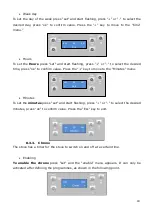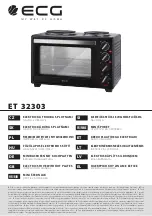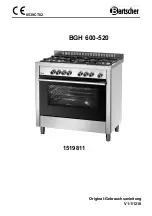
12
The stoves operate with the combustion chamber in a depressive state, so it is
absolutely necessary to have a smoke evacuation duct that extracts the combustion
gases properly.
Smoke duct material:
The pipes to be installed shall be rigid, of stainless steel with a
minimum thickness of 0,5 mm, with joints for the connection between the different
sections and accessories.
Insulation
: Smoke ducts should be double-walled with insulation to ensure that the
fumes do not cool during outdoor travel, which would cause inadequate draught and
condensation that could damage the appliance.
Inspecion “T”
: Always use a "T" at the exit of the stove
Windproof terminal:
A windproof terminal should always be installed to prevent the
return of fumes.
Chimney depression
: The figures illustrate three standard diagrams with the
appropriate lengths and diameters. Any other type of installation must ensure that a
depression of 12 Pa (0.12 mbar) is generated, measured at maximum power and in a
hot state.
Ventilation:
For the stove to function properly, an air inlet with a minimum cross-
section of 100 cm2 must be provided in the room where the appliance is installed,
preferably near the back of the stove. The stove has a round tube (Ø50mm) that can
be connected to the outside of the room. It is recommended that this connection is no
longer than 60 cm in length and without any kind of disturbance (e.g. bends).
If there is an air extraction system in the dwelling (e.g. kitchen extractor), it
will be necessary to have an upper ventilation section and dimensioned to the
various equipment that remove air from the dwelling. The placement of the
salamander in places where kitchen extractors or smoke extractors are
applied can impair the proper functioning of the stove. It is recommended
that the stove is switched off when these extractors are in operation.
Summary of Contents for K50
Page 44: ...43 ...
Page 45: ...44 ...
Page 46: ...45 ...
Page 59: ...58 20 2 Fluxograme Ignition ...
Page 60: ...59 ...














































